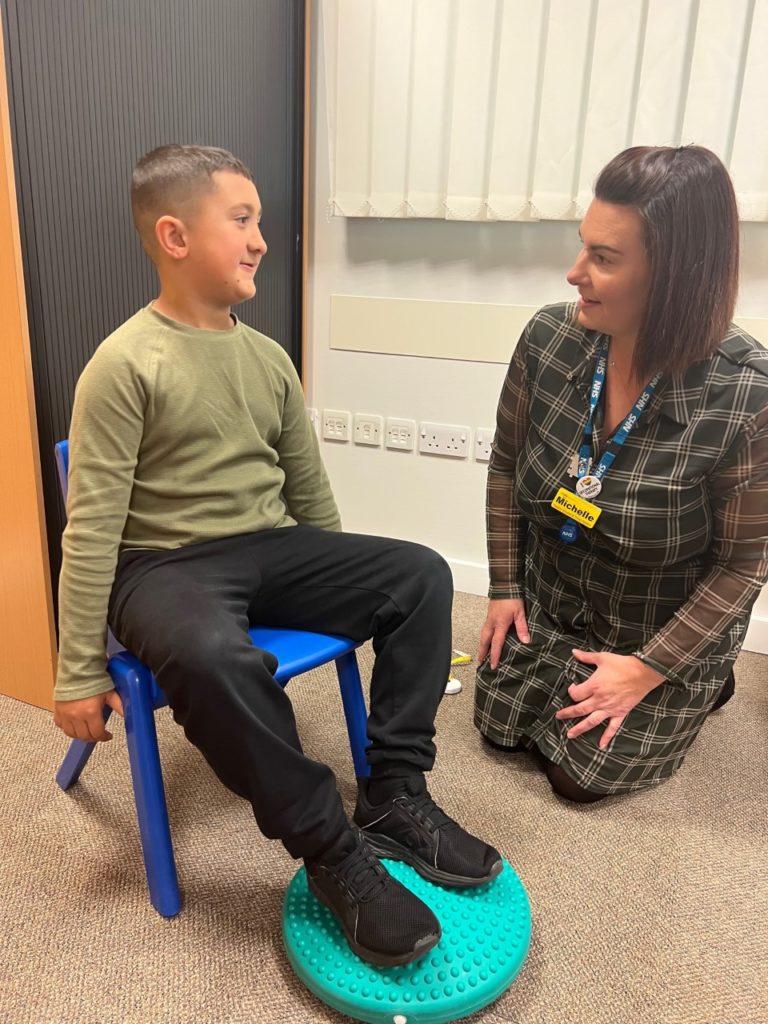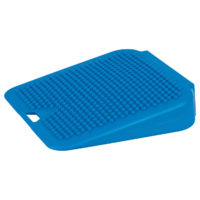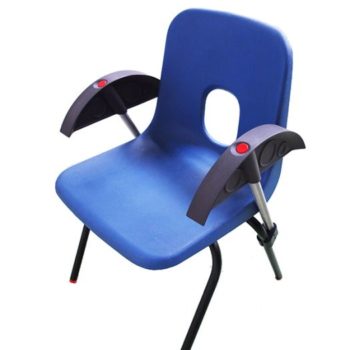Seating and postural management describes the way in which our bodies are positioned and managed both when we are awake and asleep. There are numerous benefits in correcting positioning for seating and these can include: comfort, improved posture and safety, pressure relief, digestion and respiratory function.
Getting Seating Right
Common problems with seating include:
• Table too high: This causes children to sit with hunched shoulders which restricts movements and affects efficient function of the hands. The child will often hold their head too close to the desk also. For many children, we could consider a slanted desktop which not only gives stability for the arms when writing, but also helps keep a more upright posture at the desk. Slanted work surfaces allow a better positioning of the wrist and hand.
• Table too low: To achieve stability children will often lean forward excessively and will then use the non-dominant hand to support their head rather than the paper.
• Chair too high: If a child’s feet are not on a stable surface, then this reduces the base of support and the child has to put more effort in to maintaining their own posture rather than concentrating on their work.
• Chair too low: The child’s knees will be too low which they may find uncomfortable for long periods.

What should be trialed before introducing specialist seating?
The principles of good seating and posture are especially important for children with mild motor difficulties including those with Developmental Coordination Disorder (DCD). Getting seating right is a “reasonable adjustment” that will help schools to ensure all children are able to access learning opportunities in the classroom. In addition to the tips for good posture provided in the resource above, it may also be beneficial to provide the following:
- A chair with sides or arms to provide guidance regarding trunk position.
- A chair with a full back rest.
- A chair with a straight, rather than angled seat and back.
- A good, heavy footrest (one that can’t be kicked away).
- A chair than can easily be moved in and out of the table.
A Movin’ Sit/Wedge Cushion
A dynamic cushion that activates intrinsic trunk muscles to support the spine. The wedge shape encourages proper posture and alignment whilst sitting at a desk/table and the gentle movement provided enables the child to focus on activities without excessive movement. For maximum benefit follow the guidelines below:

- Ensure that the cushion is placed squarely on the chair and does not overhang the front of the chair. The thick end of the wedge should be placed to the rear of the seat.
- Ensure that the cushion is not over-inflated as not only will this be uncomfortable for the child but can also induce an adverse reaction and be over stimulating. Inflate only to approximately half-full.
- Ensure that the plug is pushed fully into the cushion so that it lies flush with the rear surface of the cushion.
- Ideally, the cushion should be studded side up; however some children with tactile sensitivities find this uncomfortable and it can be used smooth side up.
- Whilst most children are able to tolerate sitting on the cushion for the entire school day, some children require a phased introduction to it. Introduce the cushion during specific work activities and gradually extend the period of use.
- Some children may benefit from using the cushion only for specific periods with a break in between. The best way to discover what works is to experiment and observe it in use and discuss with the child.
Rokzi System
The Rokzi system consists of two elements – Rokzi Armz and Rokzi Legz which can be used together or separately. Rokzi Armz are a simple and effective stability system for children and young people who need extra support when using standard school chairs. These bolt-on armrests provide comfort, confidence and security, making it easier to sit and stand up safely. They have been specially designed to harmonise with the existing school chair. They are available in dark gray, blue or red to match most school chairs.

If you have trialled the strategies above, and feel that your child or student would benefit from specialist seating, please take a look at Specialist Seating
Page Last Reviewed: 28/03/2024
